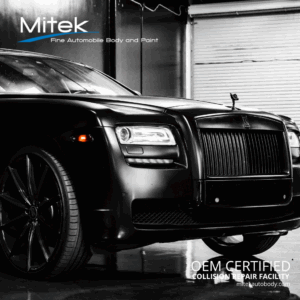Cosmetic Damage vs. Structural Damage – What’s the Difference?
If you’ve been involved in a collision, you may assume that all damage is equal (and equally bad news for your car), but this is not the case. There are two categories of collision repair damage that your vehicle can sustain during an accident: cosmetic and structural. Each type of damage can potentially affect your vehicle’s performance, safety, and future value differently.
In order to make informed decisions in your own best interests, it’s absolutely crucial to identify and understand the nature of all the damage. What’s more, a thorough damage assessment allows your collision repair provider to explain your various repair options and ensure that your vehicle will be as safe and sound as possible after repairs.
Let’s take a look at the two main types of damage that your car can sustain in an accident:
1. Cosmetic Damage
Cosmetic damage affects only the vehicle’s outward appearance, and includes dents, surface scratches and chips, and possibly bumper damage.
Although it can be extremely stressful to see your luxury car’s exterior looking anything less than perfect, the fact is that this kind of visible damage is typically less costly and time consuming to fix than structural damage. Collision repairs typically consist of relatively straightforward procedures like dent pulling, exterior parts replacement, and paint touch-ups.
2. Structural Damage
Structural damage is often the result of a high-impact collision, and impacts the core supporting structures of your vehicle — like the frame, chassis, and other parts that contribute to structural integrity. Since most of these parts and systems are concealed by the body of the car, collision repair technicians require specialized equipment and diagnostic tools to identify and document the full extent of the damage.
Cosmetic damage tends to be more minor and can be present on its own, but the chances of having structural damage without any cosmetic damage are slim to none. Since structural damage can easily result in performance and safety issues, it’s imperative for repairs to be performed by highly-trained collision repair experts, ideally ones who are manufacturer-certified to fix your specific make of car.
There are a few types of damage that don’t fall neatly into either of these categories. These types of damage can affect appearance, functionality, and safety — so it is especially important for them to be inspected, evaluated, and fixed by a trusted collision repair professional:
• Glass Damage: Cracked or broken windshields/windows can compromise visibility and passenger safety. Although they can be considered a cosmetic feature, windshields nowadays are commonly part of the structure.
• Wheel/Tire Damage: Your tires can become bent and misaligned after an impact, which can cause implications for handling and safe operation.
• Interior Damage: Did your airbags deploy? If so, they (and several related components) will need to be replaced in order for the car to remain safe to operate.
The Importance of Thorough & Accurate Damage Assessment
In addition to your safety, peace of mind, and power to make informed decisions, there are two more very important reasons why detailed and accurate damage identification is so important:
1. Safety and Resale Value
As mentioned, structural damage can affect not just the quality of your vehicle’s performance and ride, but also its ability to withstand future impacts and accidents. It is not surprising, then, that failing to recognize or repair this type of damage can severely impact your car’s marketability and resale value. Since luxury cars are especially prized for their appearance, cosmetic damage can also put a big dent in resale value, but it won’t be a threat to your safety or that of future passengers.
2. Insurance Claims and/or Litigation
In processing and valuing claims, insurance companies expect any and all damage related to the collision to be thoroughly assessed and documented in detail. This ensures that claims are filed accurately and that suitable compensation can be determined. An itemized record of all cosmetic and structural damage is also required to support personal injury lawsuits or other legal proceedings that could potentially arise as a result of the collision.
Always Trust the Experts!
There’s a lot to keep in mind when you’ve been in a collision, and understanding the difference between cosmetic and structural collision repair damage can help you feel more in control. With this all-important perspective, you can appreciate why it’s so crucial to have your car thoroughly assessed and repaired by seasoned professionals, like our team here at Mitek.
In addition to restoring your vehicle’s appearance, performance, and safety, you can always trust us to offer the guidance you need to maintain your car’s value and structural integrity, and get back on the road with the utmost confidence.

